My Tortured Relationship with “Survivor” Cars
The traffic on Oregon 26 approaching Portland’s Vista Ridge Tunnels had just started to get a little heavy when a pickup suddenly changed lanes in front of me. Evidently, they were trying to catch the last exit before the tunnel. Traffic came to a standstill at that precise moment, and when the truck jammed on its brakes, the nose of my 1976 BMW 2002 slammed into his bumper. Because of the height difference, the truck’s bumper smacked the vintage Bimmer straight in the twin kidneys. What had been a nearly perfect, original paint, preservation class 2002 was a write-off. And it happened on my watch.
PTSD is way too strong a term for the after-effects of losing an automobile, but that accident happened almost 20 years ago and it has permanently altered my ability to happily own a preservation class/survivor type of car. It made me shift gears more than just a little bit in terms of what I look for when buying a car.
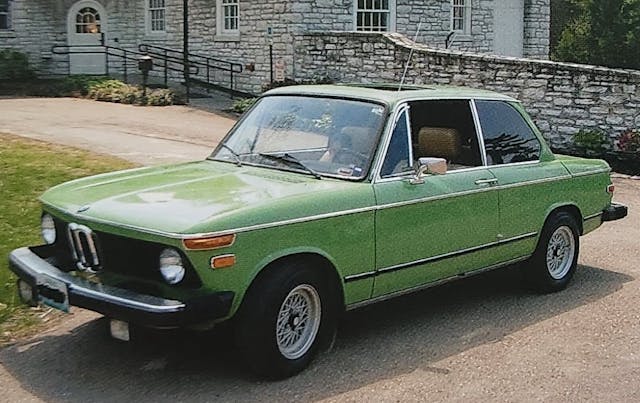
At the outset, it’s probably important to clarify what we’re talking about.
The term “survivor” gets thrown about willy-nilly. In actuality, it’s a trademarked term owned by the Bloomington Gold Corvette people. Roughly translated, a Survivor should have the majority of its original finishes intact on the body, engine compartment, interior, and underside, and those finishes should be well-preserved enough to serve as a template for restoring a similar car.
Although formally applied only to Corvettes, my ’76 BMW, originally from dry Northern California, met all of those criteria. Its Mint Green paint (actually more of a lime green shade) was totally original, the underside untouched down to the muffler, and the interior, save for a removable dash cover (which saved the dash from cracking) was perfect as well. The thing is, I didn’t think much of it. Even by the beginning of the 2000s, it was still just a nice, used car. It wasn’t until a few years later, when I went to Bloomington Gold boot camp, that I realized what I had, and what was lost on that day in Portland.
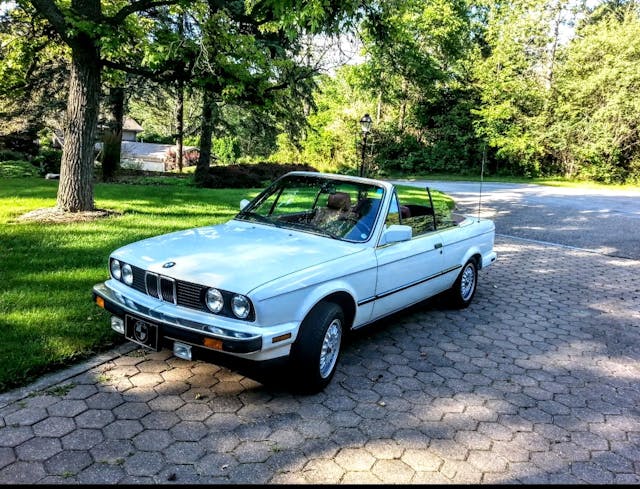
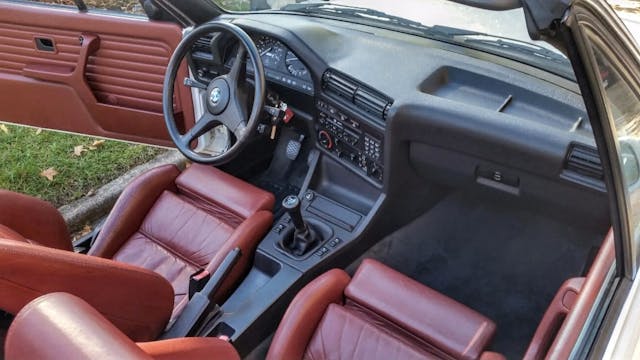
About 10 years after the accident, I tried to replace the all-original 2002. As hard as I tried to find a similar car, I just couldn’t. I found a lot of once-rusty repaints, all at several multiples of the $5000 that I paid for the Mint Green car. If perfect, unrestored 2002s still existed, they weren’t being offered on the open market anywhere that I could tell, or at any price that I could afford. I settled on an impossibly clean 1989 325i cabriolet with a five-speed manual. I found it in maybe the most unlikely place to locate a rust-free vintage BMW—Lansing, Michigan. Its Alpine White paint looked like it could have been applied the week before, the Cardinal Red leather interior didn’t even have any wear on the bolsters, and the top looked new. The car showed about 50,000 miles, and I remember wondering if any of those had been joyful, given the owner’s over-the-top obsession about the condition of the car.
As it turned out, this was a fairly prescient observation, because very few of my miles in the car could qualify in any way as joyful. My experience in the 2002 made me hate driving in any kind of traffic. The thought of the smallest fender-bender made me realize that I now lived 2000 miles away from the only painter that I knew who could properly match and blend the car’s ancient but pristine paint. And while I thought it would be fun to throw my kids and their car seats in the back to enjoy a convertible for many lovely Ann Arbor summers, the thought of what their car seats were doing to the perfect Cardinal Red seats (even with two towels underneath each) just ate at me. And then there was their habit of climbing into the back seat not by tilting the seat back forward, but by stepping on the passenger’s seat and the center console. That drove me bonkers.
I was becoming Cameron Fry’s dad—the obsessive father from Ferris Bueller’s Day Off who drove his kid to extreme neuroticism because he wouldn’t let him so much as breathe on his car. That thought was terrifying. I didn’t want to be that guy, the person who raised car-resenting, neurotic kids. I sold the perfect 325i ‘vert’, and replaced it with something the same, but very different.
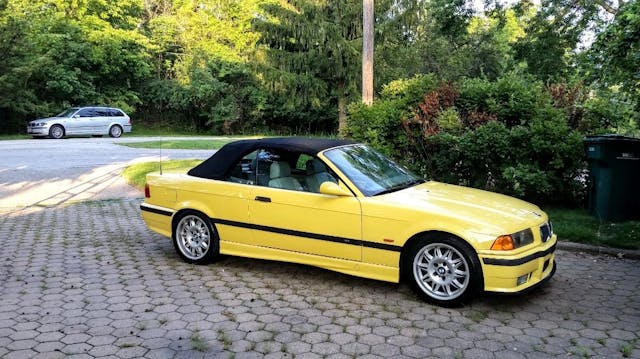
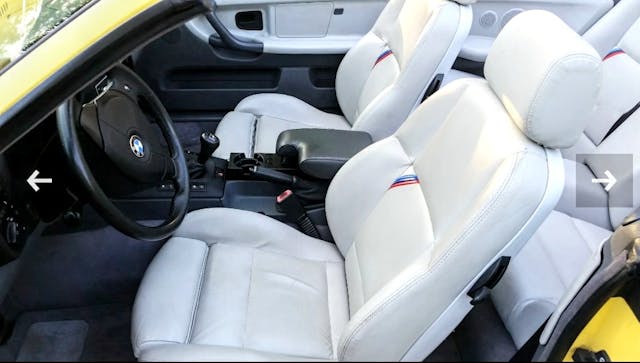
On a trip to LA, I ran across a Dakar Yellow/Dove Grey 1995 E36 BMW M3 convertible with a 5-speed. The car had almost 100,000 miles on it, not perfect, but certainly not a rat. Most importantly, the rear bumper was a shade off the rest of the car, there was a minor blend in the trunk lid, and the grey leather had been nicely re-dyed at some point. This was a car that had already accumulated some bumps, some stories, and some Carfax notes. But my time with that M3 was long, happy, and worry-free. I loved it, and my kids could climb in and out of it any way they damn well pleased. It was all the more fun this way, and fun is the whole point of this hobby, isn’t it?
***
Check out the Hagerty Media homepage so you don’t miss a single story, or better yet, bookmark it. To get our best stories delivered right to your inbox, subscribe to our newsletters.
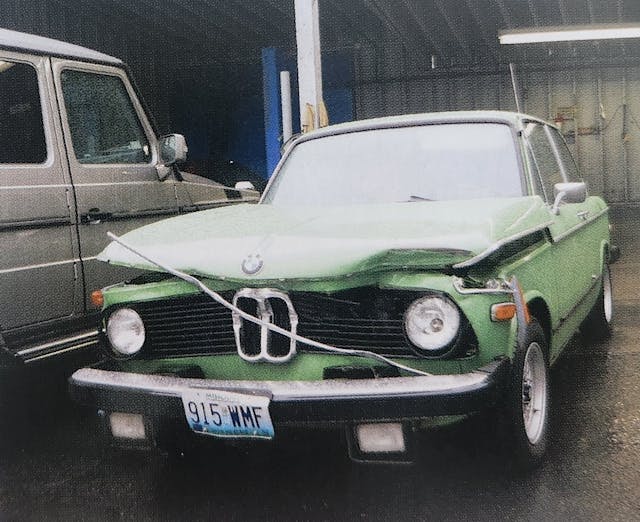


There’s never been a car built that was perfect direct from the factory and that includes Hot-Wheel models. My first drive in ANYTHING is to evaluate what needs changing to suit my wants & driving style. In the meantime I drive them as best I can until they’re ‘fixed’. People who consider sneaking into mausoleums with a compressor & air tank so their pristine cars’ original tires can have ‘correct vintage air’ inside, need professional help IMHO. It’s a planetary conveyance, not a religious icon!
Got a zero miles Lotus Elan S3 in 1969 from the lawyer for the dealer who went out of business. Paid half price – $2,500, sticker was a bit over $5K. Tachometer was missing, so the car wouldn’t run (tach is part of the ignition circuit, thank you Colin C).
Installed tachometer and license plate, drove ONE MILE to show the car to someone, some moron in a Nimitz-class Cadillac backed into it – crunch – dinged up the nose of the car. Very little actual damage because the Lotus was so light it bounced away, but yeah, I was mad enough to go out and hunt Cadillacs but they wouldn’t let me buy any of those Javelin anti-tank missiles.
Everything got ruined for the 2002 when it was ‘discovered’ maybe ten years ago, I’m guessing because people wanted to remember why we fell in love with BMWs in the first place.
I have pondered this very question, not just about ‘original’, but ‘low milers’ cars mothballed from new, and even cars brought to show condition. What do you do with them? I’ve concluded that there is nothi ng to do but drive them.
As to “historic” value, do you think anyone cares? Ever notice that the average ACCA member is older than dirt? Largely, we are not replacing car enthusiasts as fast as they are dying and going into nursing homes.
At present, I have two ‘special interest’ cars. My 1993 Miata LE is an original paint car. I bought it well, so it would turn a profit, were I to sell it. But, likely, it will be passed on to my Miata driving stepson.
My ‘other’ is a 91 Honda Acty Street G van. The cost to bring it to show worthy condition is well beyond what anyone would pay. Some of it’s parts are rare and valuable. Right now, it’s two years post restoration; about the shelf life of a show car.
So what do I do? I DRIVE them. Nothing sadder than a great DRIVING car sitting idle. I share your sympathy for the E30 convert that was never driven. I hope it’s owner had a lot of fun on numerous small trips. My LE left California with it’s 3rd owner, to drive the ALCAN highway to Anchorage-camping! Thankfully, I have some great pictures of the trip.
The Honda? It’s with me today. Beautiful 65 degree March day, and time to get the cobwebs out. It always seems happy to be out, sort of a Japanese worker, living to do what they were meant to do. It no longer hauls people or boxes, but it still does useful things.
When a car or truck stops doing what it was meant to do, it ceases to be; instead turning into a sort of mechanical sculpture. If young people are ever to be captivated by the thrill of driving, there must be cars to drive. Riding through the woods in a Bug Eye Sprite, I’m convinced, changed my life, making me a car person forever. Cars are not investments, they are not history. They are cars- drive them!